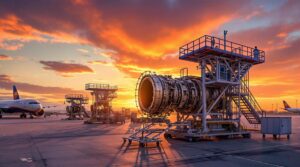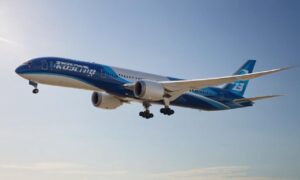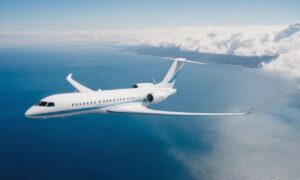Curiosity about the impressive and strategic capabilities of aircraft carriers often leads enthusiasts and curious minds to ponder the question: How many jets can an aircraft carrier accommodate? The answer to this inquiry lies at the intersection of naval engineering, operational considerations, and the evolving nature of modern warfare.
The Aircraft Carrier: A Floating Powerhouse
Before delving into the specifics of the number of jets an aircraft carrier can carry, it’s crucial to understand the pivotal role these floating fortresses play in naval operations. Aircraft carriers are not merely ships; they are mobile airbases capable of projecting power across vast stretches of the world’s oceans.
Equipped with a sophisticated flight deck and a robust infrastructure, aircraft carriers serve as the home and launch platform for various types of aircraft, including fighter jets, reconnaissance planes, and helicopters.
Size Matters: Deck Space and Aircraft Capacity
One of the primary factors influencing the number of jets an aircraft carrier can accommodate is its size. Larger carriers typically have more extensive flight decks, providing ample space for takeoffs, landings, and aircraft storage. Smaller carriers, on the other hand, may have limitations in terms of the number and type of aircraft they can carry.
Modern aircraft carriers, such as the Nimitz-class and the Gerald R. Ford-class, boast impressive dimensions, allowing them to carry a diverse mix of aircraft to fulfill various mission requirements.
Operational Flexibility and Aircraft Mix
While size is a crucial factor, operational flexibility also plays a significant role in determining the number of jets on an aircraft carrier. Carriers are designed to accommodate a mix of aircraft, each serving a specific purpose. This mix may include fighter jets for air defense, reconnaissance planes for intelligence gathering, and support aircraft for logistics and rescue operations.
The specific configuration of an aircraft carrier’s air wing depends on the carrier’s mission and the strategic goals of the naval force. This adaptability ensures that carriers can respond effectively to a wide range of scenarios, from conventional warfare to humanitarian missions.
Technological Advancements: Maximizing Capacity
Advancements in aviation technology and naval engineering have played a crucial role in maximizing the number of jets a carrier can carry. Innovations such as electromagnetic aircraft launch systems (EMALS) and advanced arresting gear (AAG) have increased the efficiency of flight operations, allowing carriers to launch and recover aircraft more rapidly and with a broader range of weights.
These technological advancements contribute not only to the overall capacity of an aircraft carrier but also to the ability to deploy a mix of aircraft with varying sizes and capabilities.
The Future of Carrier Aviation
As we look to the future, the landscape of carrier aviation continues to evolve. Ongoing research and development efforts aim to enhance the capabilities of aircraft carriers, making them even more formidable assets in naval warfare. From the integration of unmanned aerial vehicles (UAVs) to advancements in energy-efficient propulsion systems, the next generation of carriers holds the promise of further expanding the range and flexibility of carrier-based aviation.
In conclusion, the question of how many jets an aircraft carrier can carry is a dynamic and multifaceted one. It is influenced by factors such as the carrier’s size, operational requirements, and the ever-evolving landscape of technology. As naval capabilities continue to advance, so too will the capabilities of aircraft carriers, ensuring their vital role in projecting power and maintaining global security.
Fueling the Fleet: Energy Considerations
Beyond size and operational flexibility, the energy infrastructure of an aircraft carrier is a critical factor in determining its capabilities. The propulsion systems and energy sources on board directly impact the carrier’s endurance and ability to support a sustained air operation. Innovations in energy-efficient propulsion systems contribute to extending the operational range of these floating powerhouses.
Logistics at Sea: Supply Chains and Maintenance
Supporting a fleet of aircraft requires a well-organized and efficient logistical framework. Carriers are equipped with extensive supply chains to ensure a steady flow of fuel, ammunition, and spare parts. Additionally, dedicated maintenance facilities on the carrier play a crucial role in sustaining the operational readiness of the aircraft. An optimized logistical system is paramount for the carrier to function as a self-sufficient and effective naval asset.
| Supply Chain Component | Role |
|---|---|
| Fuel | Ensures continuous air operations by providing fuel for aircraft. |
| Ammunition | Supports offensive and defensive capabilities through a constant supply of ammunition. |
| Spare Parts | Maintains aircraft readiness by supplying necessary components for repairs. |
Frequently Asked Questions
-
Q: Are all aircraft carriers the same size?
-
A: No, aircraft carriers vary in size, with different classes designed for specific mission requirements.
-
Q: How do advancements in technology affect carrier-based aviation?
-
A: Technological advancements enhance the efficiency, capacity, and range of carrier-based aviation, shaping the future of naval warfare.
-
Q: What is the role of unmanned aerial vehicles (UAVs) in the future of carrier aviation?
-
A: UAVs contribute to the evolving landscape of carrier aviation, offering new possibilities for reconnaissance and mission versatility.






